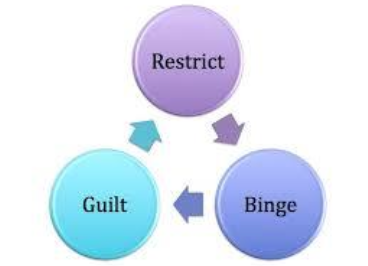3.1 primary motives HUNGER
1/32
Earn XP
Description and Tags
3.1 primary motives
Name | Mastery | Learn | Test | Matching | Spaced |
|---|
No study sessions yet.
33 Terms
HUNGER
prevents energetic deficits
maintain body weight
Two models of hunger
Short-term appetite (glucostatic hypothesis).
Long-term energy balance (Lipostatic hypothesis)
Glucostatic hypothesis - short-term appetite
Accounts for the onset & termination of hunger & eating.
short-term hunger cues regulate the initiation of meals, their size & termination.
The glucostatic hypothesis states that blood-sugar levels are critical to hunger (low bloodsugar - people feel hungry)
PHYSIOLOGY OF HUNGER (two types)
SATIETY
HUNGER
What brain structure regulates hunger & satiety
The hypothalamus — specifically, the lateral hypothalamus & ventromedial hypothalamus.
What is the function of the lateral hypothalamus?
It is the appetite’s drive center — it stimulates hunger when activated.
What is the function of the ventromedial hypothalamus?
It acts as the negative feedback’s appetite center — it signals satiety & stops eating.
lipostatic hypothesis - long-term energy balance
stored energy (fat mass) is available & used as a resource to supplement glucose-monitored energy regulation
fat produce energy
when the mass of fat stored drops below its homeostatic balance, adipose tissue secretes hormones into the bloodstream to promote weight gain (hormone → ghrelin)
when the mass of fat stored increases above its homeostatic balance, adipose tissue secretes hormones into the bloodstream to reduce food intake & promote weight loss motivation (hormone → leptin).
when the mass of fat stored drops below its homeostatic balance
adipose tissue secretes hormones into the bloodstream to promote weight gain
(hormone → ghrelin)
when the mass of fat stored increases above its homeostatic balance
adipose tissue secretes hormones into the bloodstream to reduce food intake & promote weight loss motivation
(hormone → leptin).
Which physiological factors influence the hypothalamus in regulating hunger?
Liver (glucose levels)
Stomach dimensions (fullness)
Body temperature
What happens when glucose levels in the liver are low?
The lateral hypothalamus is activated, triggering feelings of hunger.
What happens when the stomach is full & glucose levels rise?
The ventromedial hypothalamus is activated, producing satiety signals.
How does body temperature affect hunger?
Lower body temperature tends to increase hunger,
while higher body temperature decreases hunger.
What are the two opposing centers in the hypothalamus controlling hunger & satiety?
Lateral hypothalamus – hunger center (LH)
Ventromedial hypothalamus – satiety center (VMH)
Set point theory
body defends a fixed weight
linked to physiology, genetics & molecular biology.
adipose tissue intake & expenditure via a set point encoded in the brain
consistent with biological factors & energy balance
if the set point changes in response to social influence on obesity
not a set point
Settling point theory
linked to psychology & nutrition
replace the set point
focus → human behaviour & environment
Settling point theory → body weight
influenced by a variety of factors
settles based on the interaction between biological, environmental & behavioural influence
food available settling point theory
we have low expenditure.
our body fat settles at a higher point.
Environmental influences affect eating behaviour
time of day
stress
sight
smell
appearance
taste of food
Eating behavior increases when
There is a variety of foods/flavours
large portions
are in the presence of others
Restraint-release situations of hunger
Dieting & fasting can interfere with physiological guides.
Dieting
Individual brings eating behaviour under cognitive rather than under physiological control
dieting causes subsequent bingeing.
Counterregulation
a paradoxical pattern displayed by dieters
eat very little when just nibbling but eat very much after consuming a large, high-calorie “preload”
Binge-eating leads to
Conditions that threaten ego
High-calorie food
Alcohol
Anxiety & depression
Cycle of binge eating / diet - illustration

WHO - overweight + obesity
abnormal excessive accumulation of fat that can harm health
obesity has tripled since 1975
overweight - BMI
by a body mass index greater than equal to 25 and obesity by a BMI greater than or equal to 30.
how to prevent overweight
Decrease eating through self-regulation strategies.
Exercise motivation (increasing physical activity to expend fat stores).
Mindfulness over one’s environmental influences.